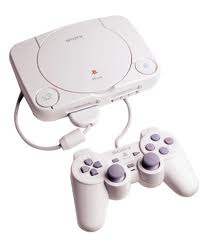How did the PlayStation controller evolve into what you see today?
Triangles, Squares, Exes and Ohs- a design history of PlayStation’s iconic controller
You take it for granted: the iconic PlayStation controller that you’ve picked up and used, for years, without ever really thinking about where it came from.
Did you know that it almost didn’t come to pass at all?
For the past 17 years, Teiyu Goto has worked on the external design of every PlayStation console, as well as their controllers and other accessories. In an interview with Famitsu magazine, Goto divulged the internal process that went into crafting some of the most iconic images in video games.
Goto began his design work at around the same time the development staff put the final touches on the first PlayStation tech demo. Since game systems were a new category for Sony, Goto was given carte blanche to go in any direction he wanted with the design. He thought up assorted designs for the console, but wound up going with a very simple one in the end: a basic box with a circle on top for the CD-ROM. The console itself was a relatively easy design process compared to what challenges he faced with the controller.
![1111413_091220181836_IMG_1808[1]](../../../../img.hsmagazine.net/1111413_091220181836_IMG_18081-300x244.jpg) At the time, the Super NES was a huge hit, and naturally Sony wanted SNES gamers to upgrade to their system. Originally the management department at Sony didn’t want the controller to be a radical departure of a standard type of design, for the fear that gamers wouldn’t accept it.
At the time, the Super NES was a huge hit, and naturally Sony wanted SNES gamers to upgrade to their system. Originally the management department at Sony didn’t want the controller to be a radical departure of a standard type of design, for the fear that gamers wouldn’t accept it.
Ignoring management’s request for a flat, Nintendo-like pad, Goto came up with a design that had grips on both ends and showed it to Sony’s president at the time. The president was very impressed; he really liked the grips on the controller because it let him get a 3D-style grasp that fit comfortably in the hand.
Management, however, was still unreceptive. They argued the grip design was simply no good, that gamers wouldn’t like it. Goto ended up switching the design to a flatter controller, and that survived all the way to the point where it was time to start making molds. Just around then, a creative report was called for: an internal presentation where assorted groups showed their current in-progress work to the top brass. During that report Goto showed off the flat controller design, explaining that this is how game consoles work right now, and Sony’s president — recalling the earlier design — was totally livid at the change.
“This is no good! Change it! What was wrong with what you showed me earlier?” He asked. ![ps3_controller_1[1]](../../../../img.hsmagazine.net/ps3_controller_11-300x266.jpg)
It was a huge boost for Goto: the president of Sony saying what he did in front of the entire management team gave him the confidence that his design was right all along.
That explains how the controller got its look, but not how the buttons got their rather unique names.
“That was also pretty tough,” Goto revealed. “Other game companies at the time assigned alphabet letters or colors to the buttons. They wanted something simple to remember, which is why PlayStation went with icons or symbols, and Goto came up with the triangle-circle-X-square combination immediately afterward.
He gave each symbol a meaning and a color. The triangle refers to viewpoint; it represents one’s head or direction, and he made it green. Square refers to a piece of paper; it represents menus or documents, and made it pink. The circle and X represent ‘yes’ or ‘no’ decision-making and he made them red and blue respectively. People thought those colors were mixed up, and Goto had to reinforce to management that that’s what he wanted.
It’s hard to imagine the famous PlayStation controller looking any different than it does now; even with the advent of motion-controller technology upon us — the Move, Kinect and Wiimote — I suspect we’ll look back, twenty years from now, with tremendous fondness at the old controller that we all use today.



 LinkedIn
LinkedIn Twitter
Twitter
Hope they never change it
Great read!
I’m kinda torn on this whole motion-controller era we’re entering.
On one hand, this technology will eventually lead to personal holosuites — and then all dating will end. This will lead to a reduction in human population growth, and more physically active humans. Which is good for the polar bears and bad for McDonald’s (which is also good for the polar bears).
On the other hand, I’ve spent thirty years with either a console controller or a keyboard/mouse/joystick. And I *like* it.
Twenty years from now, the core gamer demographic will have grown up with motion controllers like the Move, and it will be as natural to them as a mullet was to me. At that point, it’ll be interesting to see if the classic controller format we’re all used to today even still exists.
http://www.neogaf.com/forum/showthread.php?p=19921720
Found this image of a possible early prototype…not sure if this is what they were going for, but an interesting visual nonetheless…thank Mother the Goto guy knew what he was doing
*Wow.* It’s interesting to see these early designs. The slant-forward controller is an interesting concept — it rotates the wrists out, pointing the thumbs at each other (rather than having them parallel to each other). Probably would’ve caused more joint fatigue, though.
Thanks for sharing this, Razorbax!